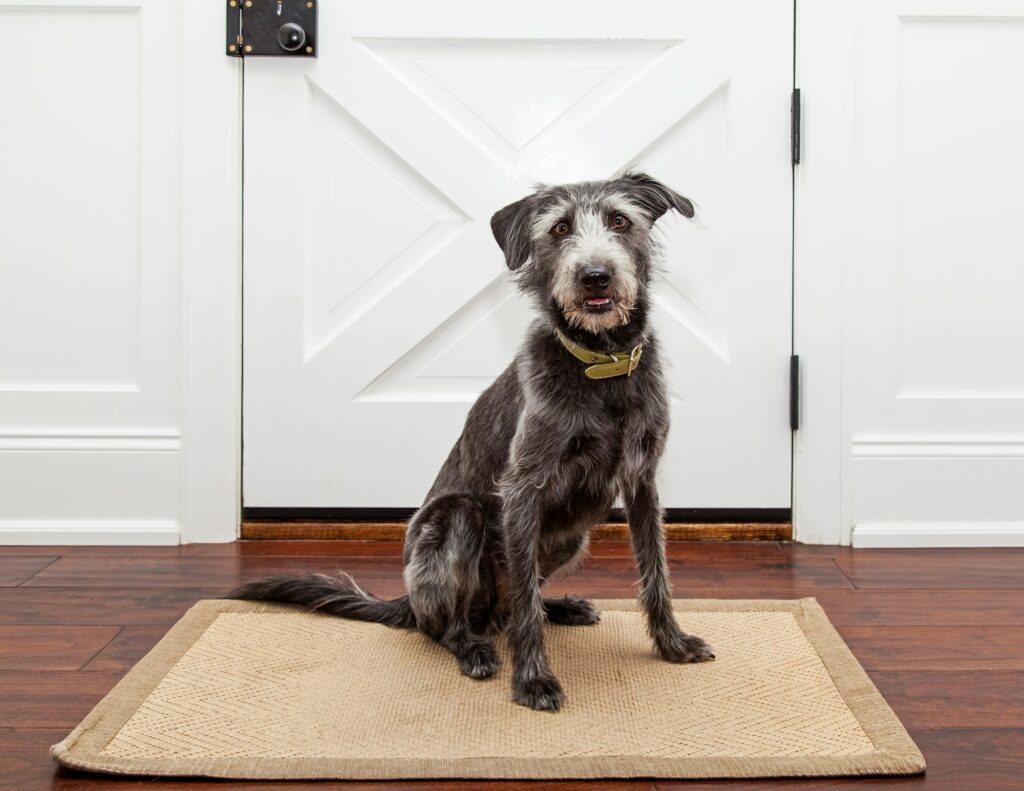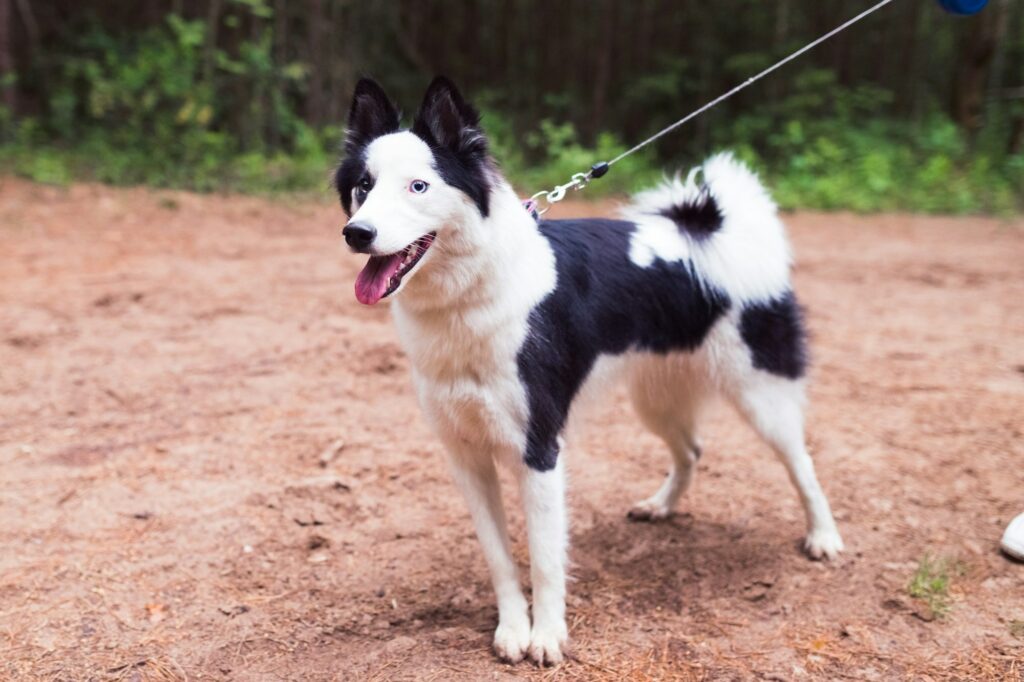Rescuing a dog is a fulfilling and heartwarming experience, but it also comes with its challenges. One of the most common is potty training. Whether your rescue dog has never been house-trained or needs a refresher course after a period of instability, this process can test your patience. But fear not! Our comprehensive guide will walk you through the steps of potty training your rescue dog, making the transition smoother for both of you.
Why Potty Training Rescue Dogs May Be Difficult
Potty training rescue dogs may pose a unique set of challenges, primarily because these dogs often come from quite variable backgrounds. Many rescue dogs have spent their lives in environments where they had sporadic or no access to outdoor spaces, leading to irregular bathroom routines. This lack of initial training can make the process of potty training significantly more challenging compared to dogs that have been house-trained from an early age.
Moreover, rescue dogs may have experienced various forms of trauma or stress in their past. These adverse experiences can lead to behavioral issues, including resistance to training. For instance, a dog who has been punished for soiling indoors may become anxious and confused during potty training. Similarly, a dog previously forced to relieve itself in a crate or enclosed space may have difficulty understanding the concept of going outside to do their business.
In addition to these behavioral challenges, the transition to a new home environment can be a source of anxiety for rescue dogs. This anxiety might manifest itself in various ways, including through house soiling. The change in surroundings, new faces, and unfamiliar routines can all be overwhelming for a rescue dog, potentially causing setbacks in the potty training process.
Understanding these potential difficulties is the first step to effectively potty training your rescue dog. By being patient, consistent, and understanding, you can help your new furry friend overcome its past and learn to adapt to its new home.
Our Top Tips for Potty Training Rescue Dogs
It’s important to remember that every dog is unique, and what works for one might not work for another. The key is patience and consistency. Experienced dog trainers and rescue experts have helped develop our top tips for potty training rescue dogs. Keep in mind that these methods are not one-size-fits-all, and adjustments may be necessary to suit your dog’s specific needs and circumstances.
Be Consistent with the Training

Consistency is the cornerstone of successful potty training for rescue dogs. Establishing a routine and sticking to it as much as possible is crucial. Whether it’s feeding times, walks, or potty breaks, keeping a regular schedule helps your dog understand what is expected of them.
This predictability can significantly reduce their anxiety and confusion, making them more receptive to the training. Always use the same words and gestures when it’s time for them to do their business. This consistency provides clear signals and helps reinforce the habit, making the process of potty training rescue dogs more effective.
Understand How Long Your Dog Can Hold it
Understanding the bladder capacity of your rescue dog is a critical component of potty training. Each dog’s ability to hold their bladder differs, and it’s crucial to remember that puppies and older dogs may need to go outside more frequently. Knowing your dog’s needs will help you create a potty break schedule that minimizes accidents. By gradually extending the time between bathroom breaks, you can help your dog learn to control their bladder effectively, leading to a successful potty training process.
Stay on a Schedule
Staying on a schedule is fundamental for potty training rescue dogs. Dogs are creatures of habit and thrive on routine. By feeding your dog, taking them out for walks, and scheduling potty breaks at consistent times each day, you provide a structure that makes it easier for your dog to understand when it’s time to do their business. A well-kept schedule offers a sense of security, reducing anxiety that can lead to house soiling. Remember, consistency is key in order to successfully potty training rescue dogs.
Don’t Let Them Have Free Reign of The House
While it might be tempting to let your new pet explore their new home freely, this could potentially hinder the process of potty training rescue dogs. It is recommended to gradually introduce your rescue dog to different parts of your house, allowing them to get comfortable with one area before moving on to the next. This controlled introduction helps manage their anxiety and prevents them from getting overwhelmed, which can lead to accidents. It also allows you to monitor their behavior better and catch signs that they need a potty break. Remember, success in potty training rescue dogs comes with patience, understanding, and a structured approach to introducing them to their new environment.
Use a Leash When You Take Them Outside
When potty training rescue dogs, using a leash when you take them outside is incredibly important. This approach helps to keep your dog focused and minimizes distractions. Particularly in the initial stages of potty training, the new outdoor environment filled with engaging sights and smells can easily divert their attention.

With a leash, you can guide them to the designated spot for doing their business, reinforcing positive habits. This makes the potty training process for rescue dogs more efficient.
Get Rid of the Pee Pads
Pee pads might seem like an excellent idea for potty training rescue dogs, but they can often prolong the process rather than expedite it. This is because they can confuse your dog, making them think that it’s okay to relieve themselves indoors. Instead of using pee pads, it’s more beneficial to teach your rescue dog from the start that the outdoors is the correct place to go. This might require more patience and consistency, but it will ultimately make the potty training process smoother and more efficient in the long run. Remember, potty training rescue dogs aims to establish good habits that will last a lifetime.
Utilize Positive Reinforcement, Not Punishment
One of the most effective strategies in potty training rescue dogs is utilizing positive reinforcement, not punishment. This means rewarding your dog for going to the bathroom outside and ignoring accidents that happen indoors. Remember, your rescue dog is learning a new behavior, and creating a positive association with this process is crucial. Treats, verbal praise, or petting can all serve as rewards for successful outdoor bathroom breaks. Punishing your dog for accidents can lead to fear and confusion, potentially causing more problems down the line. Always remember that patience and understanding are essential in potty training rescue dogs.
Know How to Clean up After Accidents Properly
An often overlooked but incredibly crucial element of potty training rescue dogs is knowing how to properly clean up after accidents. When accidents occur, as they inevitably will, it’s essential to clean the area thoroughly to remove any odors that might encourage your dog to use the same spot again in the future. This goes beyond mere aesthetics – it’s a vital component of reinforcing the right behaviors and ensuring the success of the training process. Remember, your goal is to make outdoor space the preferred and primary space for your dog to relieve itself. Proper cleanup is a significant step towards achieving this objective.
What to do When Accidents Happen
When potty training rescue dogs, accidents will inevitably happen. It’s important to handle these situations calmly and patiently. Don’t punish your dog for their mistake; this can lead to fear and confusion. Instead, calmly clean up the mess and continue with the training routine. If you notice the accident while it’s happening, interrupt your dog gently and take them outside immediately. This helps them to associate the act of going to the bathroom with being outside. Over time, your dog will understand the rules, and accidents will become less frequent.
Potty training rescue dogs can be a challenging but ultimately rewarding process. It requires patience, consistency, and understanding of your dog’s unique needs and circumstances. Following these tips and maintaining a positive, supportive approach can help your rescue dog adjust to their new home and develop healthy bathroom habits. Remember, every dog is different and potty training rescue dogs might take time. But with persistence and love, your furry friend will soon be well-adjusted and comfortable in their forever home.
